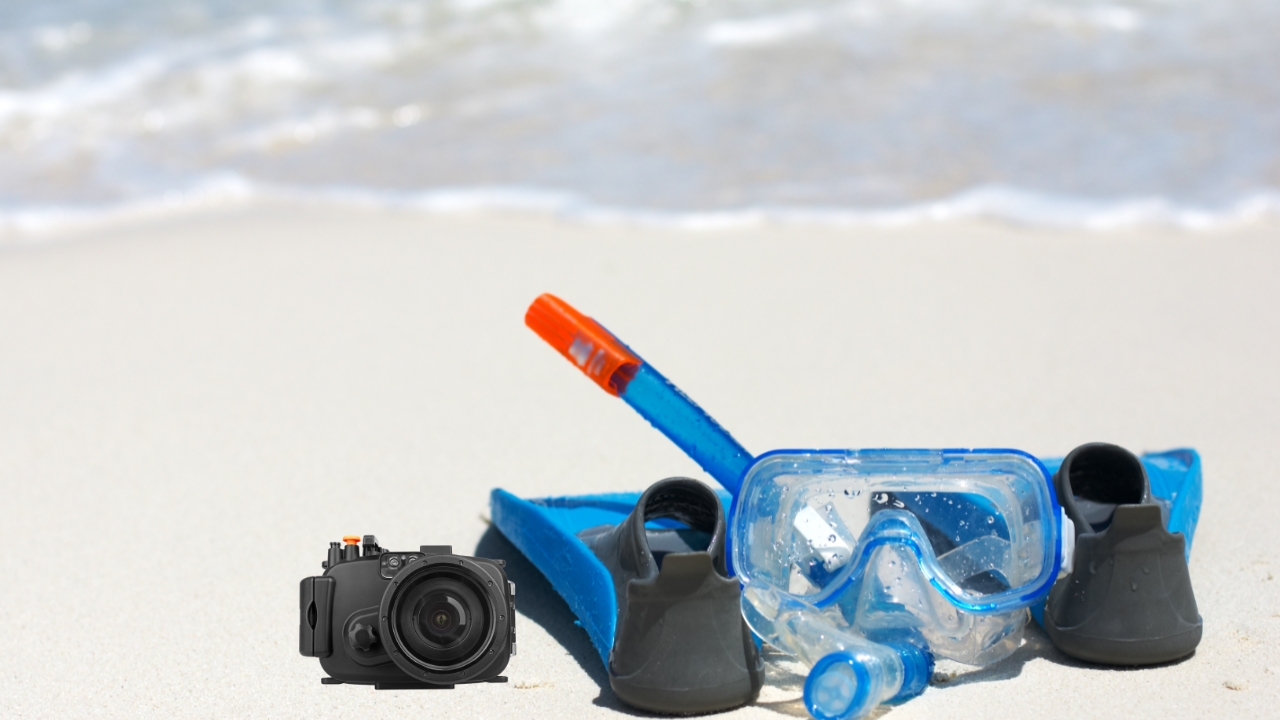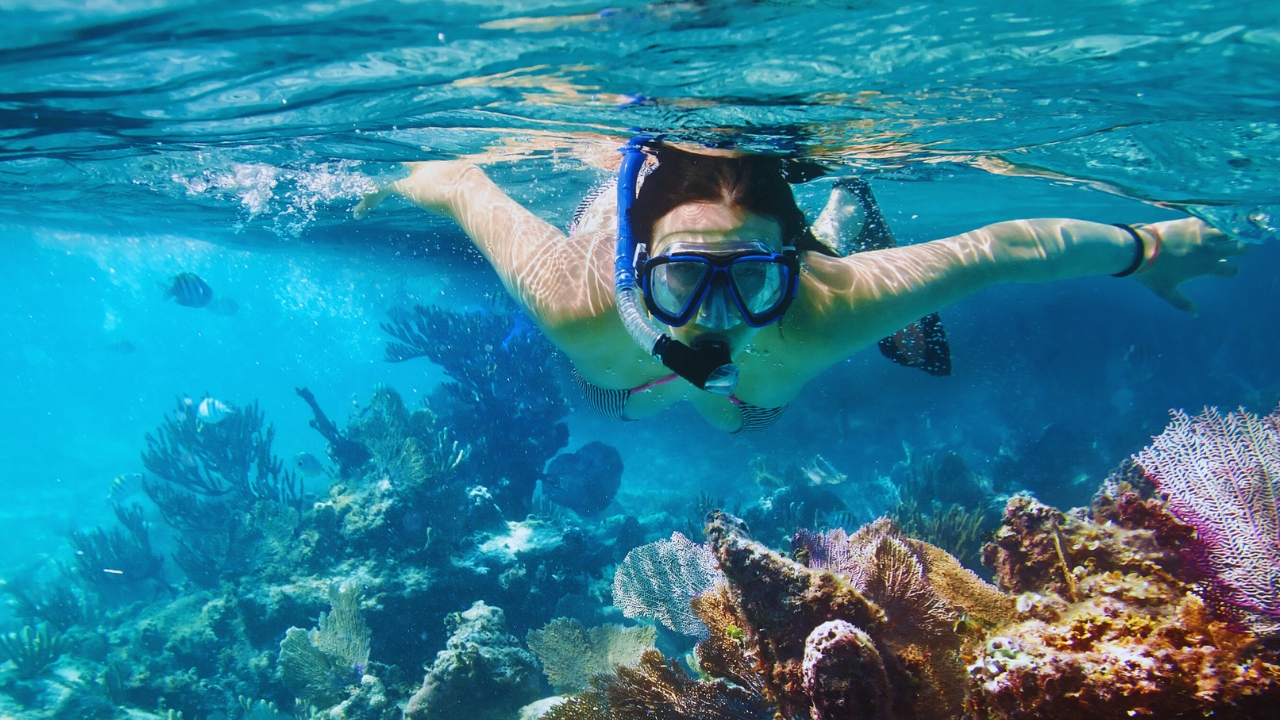Choosing the right snorkeling equipment is essential to ensure a safe and enjoyable underwater adventure. Whether you’re a seasoned snorkeler or trying it out for the first time, here’s a comprehensive guide to help you choose the right snorkeling gear.
Snorkeling is an exciting and accessible underwater activity that allows you to explore mesmerizing marine life. To make the most of your snorkeling experience, it’s essential to have the right snorkeling gear. With a wide variety of snorkeling gear available in the market, choosing the best equipment can be overwhelming.
Fear not! In this comprehensive guide, we’ll walk you through the process of selecting the best snorkeling gear, from masks and snorkels to fins and wetsuits. By following our expert advice, you’ll be well-prepared to embark on a safe and enjoyable snorkeling journey, making memories that will last a lifetime. So, let’s dive in and ensure you have all the tools you need for an unforgettable underwater experience!

Complete Guide to Choose the Best Snorkeling Gear
Snorkeling safely requires essential gear like a snorkel mask, tube, fins, rash guard, wet suit, snorkel vest, and an underwater camera. The snorkel mask ensures a clear view underwater. The snorkel tube enables easy breathing while exploring the depths.
Fins aid in efficient movement through the water. A rash guard protects against sunburn and jellyfish stings. A wet suit keeps the body warm in colder waters. A snorkel vest provides buoyancy and added safety. Lastly, an underwater camera captures beautiful memories.
Choose gear that fits properly, is comfortable, and meets safety standards. Equip oneself with the best gear to enjoy the exhilarating experience of snorkeling. Experience the wonders of the underwater world with peace of mind and maximum safety.
1. Snorkel Mask: Finding The Perfect Fit
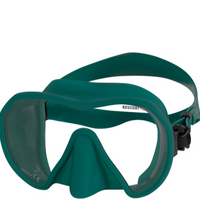
Finding the perfect fit for your snorkel mask is essential for safe and enjoyable snorkeling. Consider these features when choosing a mask:
Material and durability
The material should be durable to withstand underwater pressure.
Lens quality and visibility
While the lens should provide clear visibility.
Comfort and strap adjustability
Additionally, comfortable fit and adjustable straps are crucial for a snug and secure mask. Avoid poorly fitting masks that may leak water or cause discomfort during your snorkeling adventures.
Invest in a well-fitting mask to ensure a great snorkeling experience and make the most out of your underwater explorations.
2. Snorkel Tube: Breath Easy Underwater
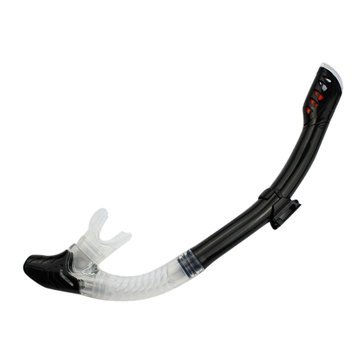
Snorkeling safely is essential, and having the right gear can make all the difference. When it comes to snorkel tubes, there are different types to consider. Traditional snorkels are the most common, while dry snorkels keep water out more effectively. Factors to consider when selecting a snorkel tube include the tube length and size, purge valves, and splash guards.
Length
Choose a snorkel that is neither too long nor too short. An ideal snorkel should be long enough to reach above the water’s surface, making it easy to breathe, even if there are small waves.
Mouthpiece
Look for a snorkel with a comfortable and ergonomic mouthpiece. A silicone mouthpiece reduces jaw fatigue and ensures a better seal.
Purge Valves
A good purge valve should introduce minimal airflow resistance when clearing water from the mask. A low-resistance purge valve provides a seamless and comfortable water-clearing process.
Dry Top or Splash Guard
Snorkels with a dry top or splash guard prevent water from entering the tube when you submerge, ensuring you can breathe effortlessly.
Easy clearing and dry-top technology are also important features to look for. By choosing the right snorkel tube, you can breathe easily underwater and have a fantastic snorkeling experience.
3. Fins: Enhance Your Snorkeling Experience
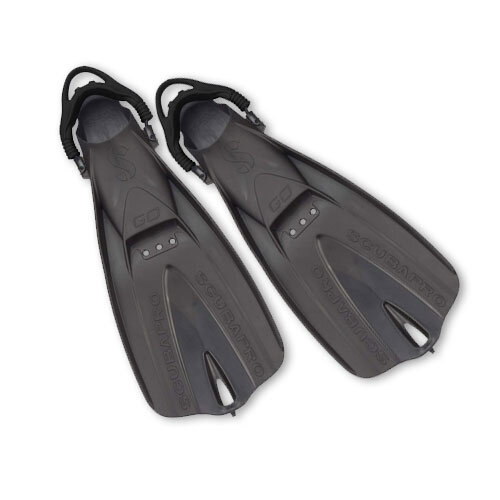
Snorkeling fins are essential for enhancing your underwater experience and ensuring safety in the water. Two types of snorkeling fins are available: full-foot fins and open-heel fins. When choosing fins, consider factors like size, fit, blade type, and design.
Fit
Pick fins that fit snugly but not too tight. They should be comfortable and allow you to move your feet freely.
Open Heel vs. Full Foot
You can choose between open-heel fins (worn with booties) or full-foot fins. Open-heel fins offer a more customizable fit, while full-foot fins are generally more compact and convenient for travel.
Blade Type
Fins come with various blade designs, each offering different levels of propulsion and energy expenditure. Research the different types to find the one that suits your snorkeling style.
The right fit and size will provide comfort and prevent blisters. Blade type and design affect propulsion and maneuverability in the water. Adjustable straps offer added convenience and ensure a secure fit. By using snorkeling fins, you can swim effortlessly, conserve energy, and explore underwater wonders.
4. Rash Guard: Protect Your Skin From The Sun
One crucial piece of snorkeling equipment is a rash guard, which helps protect your skin from the sun’s harmful rays. Wearing a rash guard while snorkeling is of utmost importance. When choosing the right one, consider the level of UV protection, SPF rating, material, and design.
Sun Protection
Look for a rash guard with a high UPF (Ultraviolet Protection Factor) rating, preferably UPF 50+, which offers excellent protection against both UVA and UVB rays. A high UPF rating ensures you can enjoy your water activities without worrying about sunburn.
Material
Rash guards are typically made from synthetic materials such as polyester, spandex, or a blend of both. These materials are lightweight, quick-drying, and offer excellent stretch for freedom of movement. Opt for a rash guard with a high-quality fabric that feels comfortable against your skin and doesn’t chafe during prolonged use.
Fit and Comfort
The rash guard should fit snugly but not too tight, allowing for a full range of motion without feeling constricting. Flatlock seams are preferred over regular seams as they reduce friction and prevent chafing.
Style and Design
Rash guards come in various styles and designs, from solid colors to vibrant patterns. Choose a style that reflects your personality and complements your other beach or water sports attire. Additionally, some rash guards may have features like thumbholes or a loop to attach boardshorts, providing added convenience.
With the right rash guard, you can enjoy your snorkeling trips without worrying about sunburn or skin damage. So, invest in the best gear and make your snorkeling experience even better.
5. Wet Suit: Stay Warm In The Water
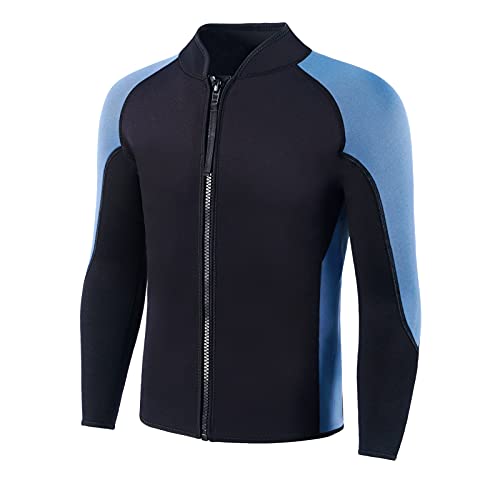
When it comes to choosing the best wetsuit, there are several important factors to consider to ensure you get the right one for your needs. There are different types of wet suits available for snorkeling, including short wet suits and full suits. So, selecting a wet suit, consider factors such as thickness and insulation, zipper type and access, as well as fit and comfort.
Thickness and Material
Wetsuits come in various thicknesses, typically measured in millimeters. Thicker suits offer more insulation but may limit flexibility. For warm waters, a thinner suit, around 2-3mm, may be sufficient. In colder conditions, opt for thicker options, such as 5mm or more. Additionally, consider the material – neoprene is the most common and provides excellent insulation and flexibility.
Style: Full Suit, Shorty, or Springsuit
Full suits cover your entire body and are suitable for cooler waters. Shorties have short arms and legs and are ideal for warmer conditions. Spring suits, also known as short-arm, short-leg suits, strike a balance between the two. Choose the style that best suits the water temperature and your comfort.
Fit and Comfort
A well-fitting wetsuit is crucial for comfort and performance. Ensure there are no gaps, especially around the neck, wrists, and ankles, as these areas can let water in. Try on different sizes and styles to find the one that fits you best.
Zipper Type
Wetsuits generally come with back zippers or chest zippers. Back zippers are more common and easier to get into, but they may allow some water to enter. Chest zippers provide a better seal and less water entry but can be a bit more challenging to put on.
Seams and Stitching
Pay attention to the type of seams and stitching used in the wetsuit. Flatlock seams are suitable for warm waters but may allow some water exchange. Blind-stitched and glued seams provide better insulation and prevent water from entering the suit. Some premium wetsuits also feature taped seams for added durability.
6. Snorkel Vest: Stay Safe And Buoyant
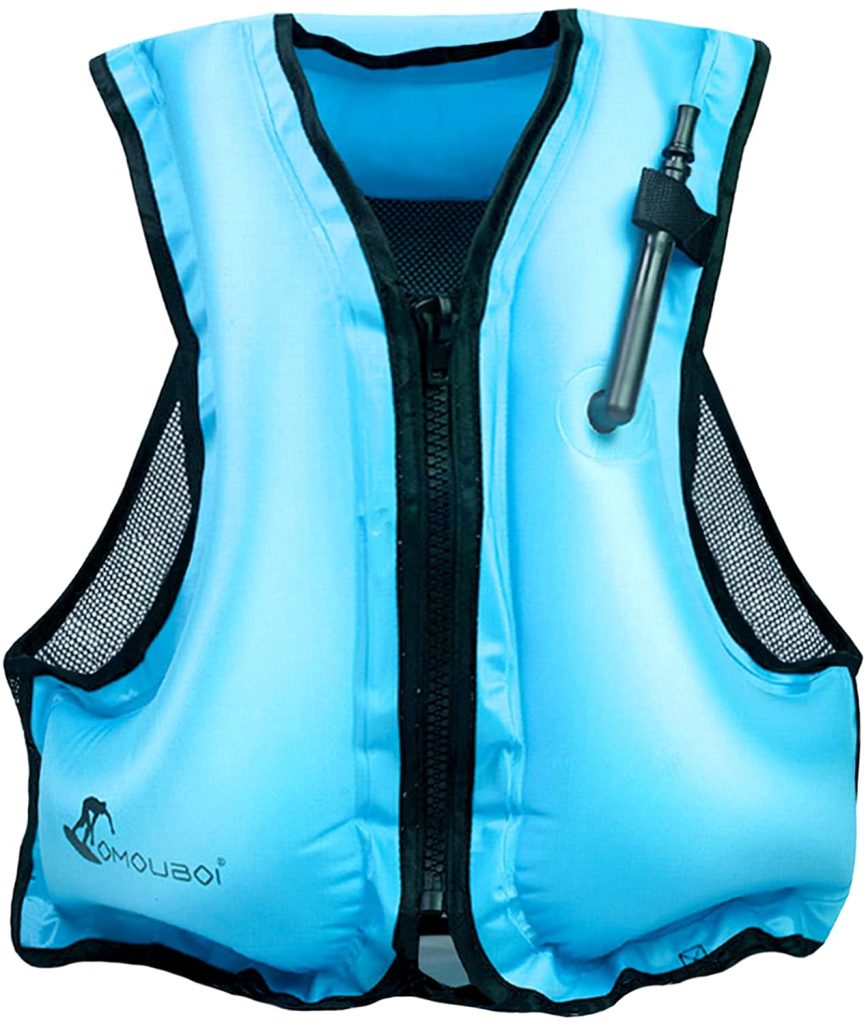
Why do you need a snorkel vest? Well, snorkel vests provide buoyancy and keep you afloat in the water, giving you peace of mind. When choosing a snorkel vest, consider factors like buoyancy levels and adjustable straps. Material and durability are also important considerations. You want a vest that will last and withstand the elements.
Buoyancy and Size
Choose a vest that offers enough buoyancy to keep you comfortably on the water’s surface without feeling overly buoyant. Additionally, ensure the vest comes in different sizes, and select one that fits snugly without being too tight.
Material and Durability
Neoprene or nylon-coated materials are common choices, as they are sturdy and can withstand the conditions in the water. A well-constructed vest will last longer and resist wear and tear, making it a reliable companion for your snorkeling adventures.
Inflation Mechanism
Snorkel vests can have different inflation mechanisms. Manual inflation involves blowing air into the vest through a valve, allowing you to control the level of buoyancy. On the other hand, automatic inflation activates when the vest is submerged in water, providing instant buoyancy. Choose the inflation mechanism that suits your preferences and level of comfort.
Safety Features
Ensure the snorkel vest has safety features such as a secure buckle or zipper closure. A reliable closure ensures the vest remains securely fastened while you snorkel, preventing any accidental deflation or slipping off. Also, check for reflective strips or bright colors, which can improve visibility and safety, especially in open waters.
Portability and Travel-Friendly
If you plan on traveling with your snorkel vest, consider its portability. Look for vests that are lightweight, foldable, and easy to pack into your luggage. Travel-friendly vests won’t add much bulk to your gear, making them convenient companions for your snorkeling trips.
So, before you embark on your next underwater adventure, make sure to invest in a quality snorkel vest for a safe and enjoyable experience.
7. Underwater Camera: Capture Your Snorkeling Adventures
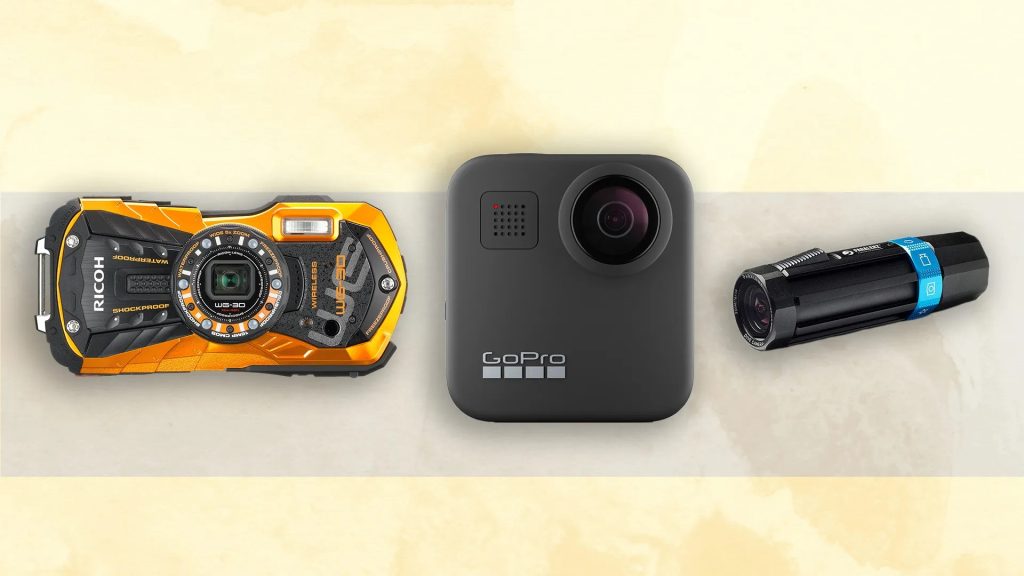
Using an underwater camera while snorkeling offers numerous benefits. You can capture your snorkeling adventures in stunning detail, creating lasting memories. There are different types of underwater cameras to choose from, including point-and-shoot cameras and action cameras. When selecting an underwater camera, consider factors like image quality and resolution, waterproof depth rating, and ease of use.
Water Resistance and Depth Rating
Ensure that the camera is specifically designed for underwater use and has an adequate water resistance rating. Look for a camera with a depth rating that exceeds the maximum depth you plan to snorkel. Most snorkeling activities stay relatively shallow, so a camera with a depth rating of at least 30 feet (10 meters) should suffice.
Image Quality
Look for a camera with high resolution (at least 12 megapixels) and good low-light performance. The ability to capture clear and detailed images underwater, even in dimly lit conditions, will ensure your snorkeling memories are beautifully preserved.
Video Recording Capability
Consider whether you want the camera to record videos as well. Look for a camera that can shoot Full HD (1080p) videos or higher with good frame rates.
Optical Zoom
An optical zoom feature allows you to get closer to the underwater subjects without physically approaching them. Look for a camera with at least 3x optical zoom for more versatility in your underwater photography.
LCD Screen
A large and bright LCD screen is beneficial for composing shots and reviewing your captured images underwater. It’s essential to have a clear view of what you’re capturing, especially when dealing with varying lighting conditions underwater.
Underwater Modes and White Balance
Some underwater cameras come with specialized underwater shooting modes or white balance settings. These features optimize the camera’s settings for underwater conditions, resulting in better color reproduction and improved image quality.
Size and Portability
Consider the size and weight of the camera, as you’ll likely want a compact and lightweight device for snorkeling. A smaller camera is easier to handle and won’t add unnecessary bulk to your snorkeling gear.
Battery Life
Check the camera’s battery life, especially if you plan to spend extended periods snorkeling. A camera with a long-lasting battery ensures you won’t miss out on any fantastic underwater moments due to a drained battery.
With the right gear, you can capture amazing underwater shots and share them with friends and family. So, make sure to invest in a high-quality underwater camera for your next snorkeling trip.
Final Words
Choosing the best snorkeling gear is essential to ensure a safe, comfortable, and enjoyable underwater experience. With a wide range of options available, it’s crucial to consider several factors before making your selection. By following our comprehensive buying guide, you can confidently equip yourself with the right snorkeling gear for your needs.
Prioritize fit, visibility, and features like purge valves in snorkel masks. Choose comfortable and efficient fins, wear a quick-drying rash guard, and ensure safety and comfort are paramount. With the best gear, dive into the wonders of the underwater world and create unforgettable memories!
So, before your next snorkeling trip, make sure you choose the best gear to make the most of your underwater exploration. Happy snorkeling!

